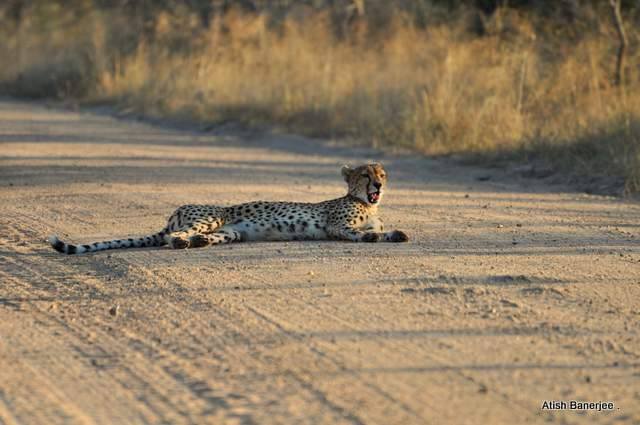India unanimously represents the pinnacle of conservational success. Despite being inhabited by over 17% of the world’s human population, the country has some of the most biodiverse natural landscapes where timely scientific interventions have instigated the most miraculous of recoveries. There has been much excitement across the world as conservationists prepare for the cheetah reintroduction in India. Currently the species is classified as “Critically Endangered” on the IUCN Red List. Can India rescue another species? Will cheetahs save India’s dying grasslands?

Brief History
The reintroduction of species into historic habitats which has been at the helm of India’s conservation miracles. Despite the innumerable logistic challenges, rhinos, gaur and tigers have been reintroduced across India’s sanctuaries. The recovery of localy extinct species have had unprecendented benefits on the natural habitat. One such international example of this is the reintroduction of Wolves in Yellowstone National Park. Top-down ecological cascades such as these continue to surprise conservationists.
Following her incessant success of species reintroductions, India has set out on another highly ambitious project – the reintroduction of wild cheetahs into the country. As the world’s fastest mammals are often associated with the African savannah, few are aware that this elegant feline has historically inhabited the plains of Asia. Significant poaching has restricted the range of the Asiatic Cheetah to the Middle East. India’s last wild cheetah was hunted down in 1951, in the Koriya District of Chhattisgarh by a Royalty, making the Asiatic Cheetah the first species in the country to have become extinct in the wild due to anthropogenic causes.
Hunting of the species was already prevalent in the Rajput and Maratha empires but it significantly escalated following the Mughal and British invasions. In fact, the Mughal Emperor Akbar had mastered the art of domesticating cheetahs for sport hunting of ungulates (hoofed animals) such as the Blackbuck and the Indian Gazelle.
What is the current status?
In January 2020, the Supreme Court lifted a seven year stay order on the reintroduction of Asiatic Cheetahs. Since then, the Environment Minister, on World Wildlife Day 2021, mentioned that the project was making much progress.

There are currently three locations identified for as potential reintroduction sites. This includes the Kuno-Palpur Wildlife Sanctuary and Nauradehi Wildlife Sanctuary in Madhya Pradesh. The Shahgarh bulge landscape in Rajasthan has been chosen as the third location. Two other sites have been shortlisted as possible habitats for Asiatic Cheetahs. This includes Desert National Park and the Banni Grasslands of Rajasthan.
Unfortunately, the project has faced significant hurdles along the way. The project finds its roots in 1955, in the state of Andhra Pradesh. The state forest department had planned reintroducing Asiatic Cheetahs in two of the districts. Though not successful, the proposal triggered much interest. In fact, a paper on the status of Asiatic Cheetah in India was published. This caused significant exuberance amongst international NGOs such as the IUCN.
What are some of the challenges for the cheetah reintroduction in India?
India officially requested Iran to translocate a few of the last remaining Asiatic Cheetahs decades ago. However, the Middle-Eastern Country has been reluctant. Iran had asked for a number of wild Asiatic Lions in return. The proposal was rejected by India and decades of negotiations ceased in 2010.
In 2009, the possibility of importing African Cheetahs to India was investigated. Efforts were stalled by the Supreme Court following legal notices filed by conservationists. Numerous challenges were not accounted for at the time. Firstly, the project was overshadowed by the planned translocation of Gir Lions. The potential sites of cheetah reintroduction overlapped with that of the Gir Lion translocation projects. With limited resources running thin, it made more sense to direct efforts to conserving species presently found in India
It is commendable that the Madhya Pradesh Forest Department is committed to becoming the abode of big cats. Though historically common, the coexistence of cheetahs, leopards, tigers and lions in the wild, is an ambitious dream. However, India is a developing country. The pandemic has plagued the nation with a severe economic crisis. With already depleting financial capabilities, the reintroduction of Asiatic Cheetahs can wait.
Is there enough space for the cheetah reintroduction in India?
Furthermore, the state of India’s forests are incomparable to those of the 20th century. It is highly doubtful whether the depleting grasslands of India have the ability to host another predator. Only 3% of these vital habitats are listed under protected areas. In fact, these habitats are considered barren wasteland by the Central Government. The remaining habitats are being used for highly unscientific Compensatory Afforestation Projects. Rapidly growing and water depleting monocultures of invasive species such as Eucalyptus are replacing grasslands. Wildlife conflict with humans is already a concern in grasslands, especially with the Indian Grey Wolf, whose population almost entirely lies outside Protected Areas. Adding cheetahs to the landscape will only exacerbate the issue further.
Another issue lies in the genetic differentiation of Asiatic and African Cheetahs. The two subspecies diverged over 100,000 years ago. As the latter species has never existed in India, concerns regarding their reintroductions have been raised. This is partly because Asiatic Cheetahs are concentrated into a tiny isolated population and African Cheetahs are an invasive species.
It is certainly an exciting time in wildlife conservation in India. Ever since the conservation revolution led by Indira Gandhi in the 1970s, India has done miracles. Will the cheetah reintroduction meet with such success?
Help us Help Them! Think Wildlife Foundation is a non profit organization with various conservation initiatives. Our most prominent campaign is our Caring for Pari intiative. Pari is a rehabilitated elephant at the Wildlife SoS Hospital. 25% of the profits from our store are donated to the elephant hospital for Pari. Other than buying our wonderful merchandise, you could donate directly to our Caring For Pari fundraiser.

Totally agree with you. Amazing article!
Thanks!